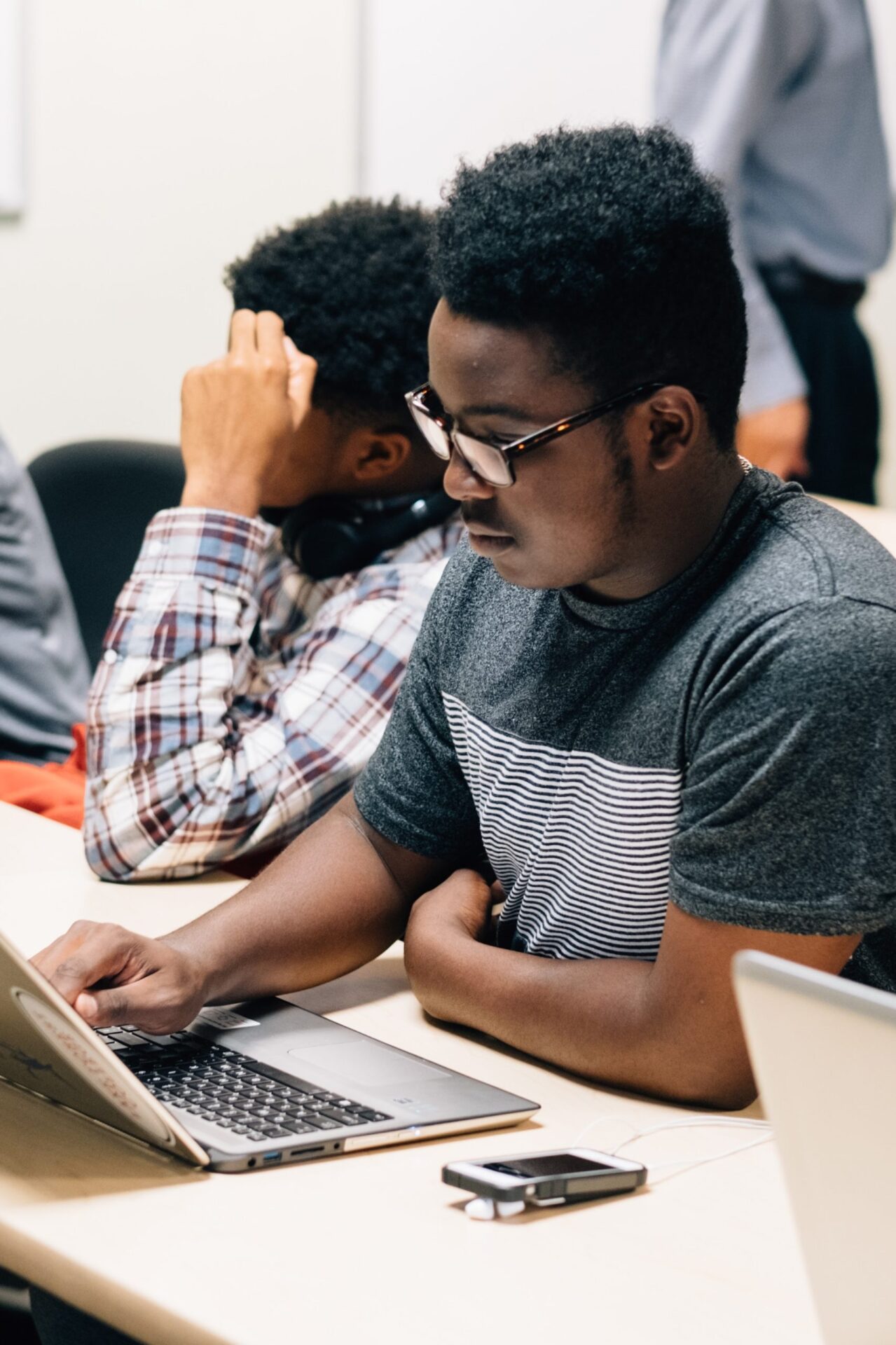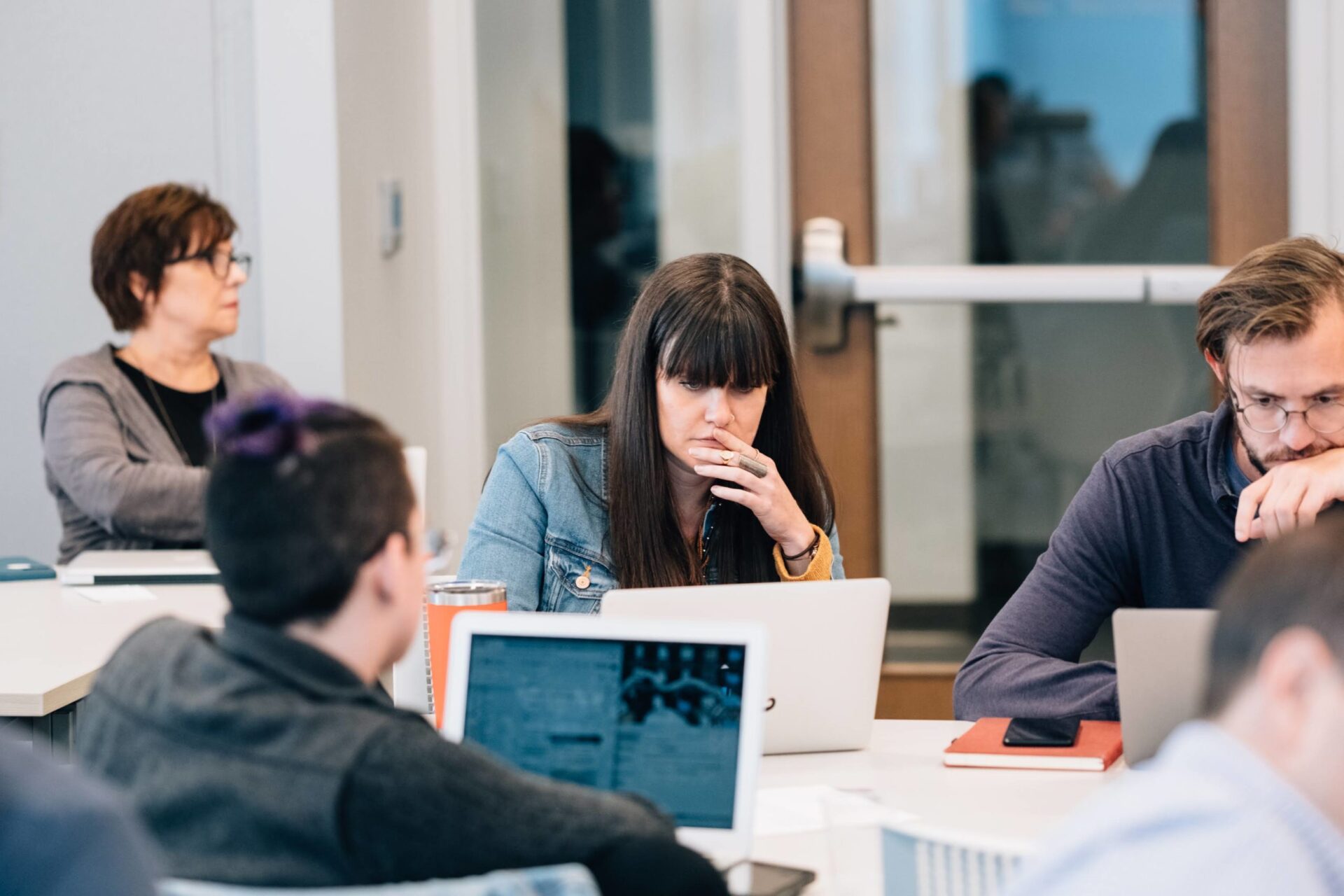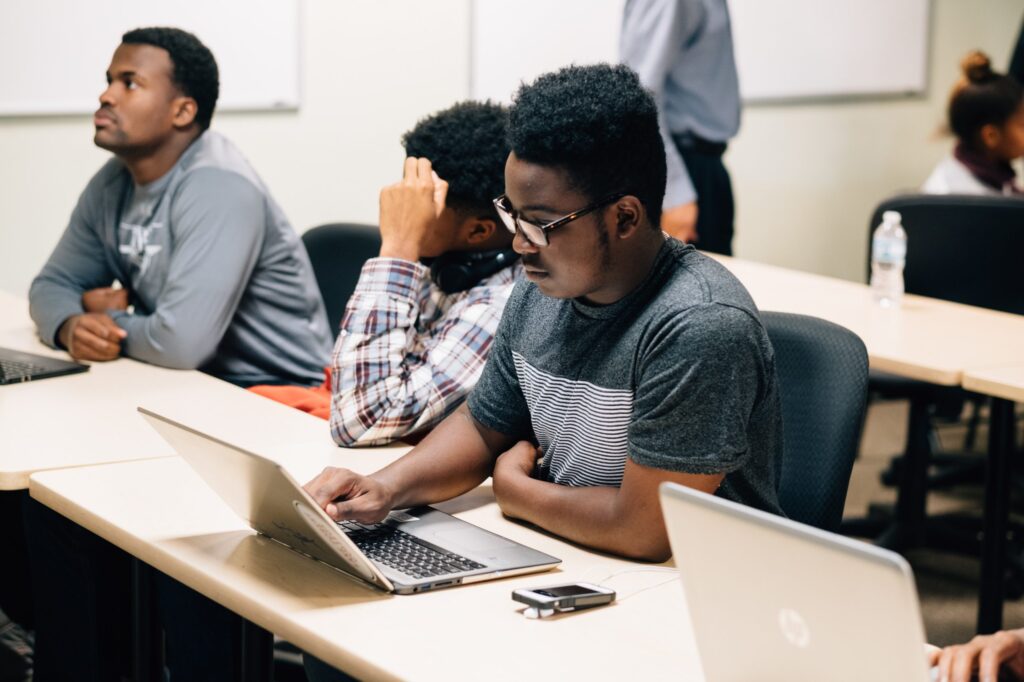
In 2015, the University of Pittsburgh (Pitt) formed a committee to explore best practices around digital technology accessibility. At the time, no one knew how valuable the timing and outcomes of this initiative would truly be.
Enter Angela Bedford-Jack–formerly a middle school librarian and later the director of digital content for New York City’s department of education–who became Pitt’s first Digital Accessibilities Coordinator two years ago.
A department of one, she works closely with the Disability Resources and Services (DRS) office at Pitt, the team that helps students with disabilities get learning accommodations (like extra test-taking time, sign language interpreters, or screen readers) to access instructional content. Angie also takes on proactive accessibility projects: It’s up to her to help the university select and adopt software and technology that eliminates or reduces the need for accommodations. It’s her job to go above and beyond meeting the letter of accessibility laws and establish systems that make it easier for all to access content.
“By law, if educational content isn’t accessible for everyone, it can’t be available to anyone. If we weren’t able to provide instruction to our students with disabilities, we would have been unable to offer it to the rest of the students at Pitt,” Angie explained.
Under her direction, several pilot programs were already well underway when the COVID-19 outbreak hit, which made it easier for Pitt to quickly move their students to online learning in an accessible manner. Pitt’s Teaching Center, IT departments, and faculty still had to work around the clock to get everything online, as the situation unfolded so rapidly. However, Angie believes the initial transition to digital learning went as smoothly as it could have, given the steps the university had taken well before the pandemic.
With so many educators in both higher-ed and K-12 facing similar obstacles to online learning and accessibility, Angie shared some key insights from Pitt’s proactive approach, including topics to consider for making courses more accessible in a remote environment, as well as some quick tips and detailed guidelines for vetting software for accessibility.
Four Keys to Maximizing Accessibility
Angie suggested a few key points to keep in mind when maximizing accessibility for online learning:
- Look beyond the fun factor: How do we usually choose any kind of technology, including educational software and tools? We pick what sounds fun and engaging! Trying to make learning as enjoyable as possible seems like a smart idea, but it’s not going to matter how fun a tool is if it can’t deliver content to all learners. Zoom and Microsoft came to mind when we asked Angie about commonly used programs that are known for being highly accessible. (Microsoft even has a Chief Accessibility Officer!)
- Consider other elements and what they might look like in a remote environment. For example, Pitt students who require additional test-taking time ordinarily take their exams at Pitt’s testing center with a proctor. While there are digital tools that administer “proctored” exams by preventing other software from operating during testing, shutting down all other applications poses problems for students who also rely on software tools to access material. Educators need to get creative and find workarounds when something doesn’t translate effectively from in-person to remote instruction in an accommodating way.
- Be mindful of the overall cognitive load of the rapid transition to online learning: This concept applies to all learners right now. The use of mental energy to simply access and learn new tools limits the capacity students have left to learn content. Angie suggested educators leave “white space” in their content. This can literally mean more white space on a written assignment to build a break into the content, but it can also mean allowing for pauses in video recordings and ensuring there’s predictable navigation within courses.
- Weigh the pros of asynchronous learning: Though there’s been a push for online learning that’s synchronous (students are engaged in a learning event at the same time), asynchronous learning typically provides for more accessibility and equity in digital learning. It’s easier for students to absorb the content being delivered when they can pause video to capture notes or look up additional information, similar to when they might normally ask a question in an in-person setting.
“The students’ cognitive work needs to be directed at the content and not on figuring out how to access the content or keeping up with a live video lecture. And don’t expect students to attend to too many things at once–like additional visuals or other input–when they’re learning online,” Angie said.
There’s a difference between instruction that’s been designed to be delivered online and what’s happening now–which is emergency online learning. But the suggestions above apply to the future of digital learning, as well as to our current experience.
Strive for Standardization and Research, Research, Research

On top of choosing the right tools, educational institutions need to provide guidelines for which tools may be used, as well as how to use them most effectively.
As a rule, institutions should consider standardizing the programs educators are to use, which helps ensure the learning experience is as consistent as possible across courses. But that may not be possible, as different disciplines will often need to use different types of programs. At the very least, schools should ask their faculty to use accessible software recommended by administrators and discourage them from going “rogue” by using a one-off program they happen to like. Despite good intentions, often when educators select tools outside provided guidelines it creates potential limits to some students’ ability to access content.
Administrators who are tasked with ensuring digital accessibility will have to do their research when selecting tools. According to Angie, a simple first step is to add the word “accessibility” to the name of the product or software when conducting online searches. When paired with tools known for accessibility (e.g., Zoom), the first result typically points to the company’s accessibility approach page. This demonstrates that the organization may have an accessible product, or they are at least developing one. On the other hand, if there’s no page like this, the company probably isn’t devoting much attention to accessibility.
For a more in-depth approach evaluating product accessibility, educators might consider these international guidelines from W3C:
- Perceivable – The content is presented to be perceived through sight, through hearing, and through touch (e.g., images have alt text, videos are captioned).
- Operable – The user interface can be operated by various input methods (e.g., you can navigate using the keyboard, without the use of a mouse).
- Understandable – Users can both understand the information and how to use the interface (e.g., written in plain language, consistent navigation).
- Robust – The content is robust enough to be interpreted by assistive technologies and will continue to be accessible as technologies advance (i.e., Someone familiar with software code should assess how agile the coding will be able to adapt.)
A product’s Voluntary Product Accessibility Template® (VPAT®), a table that contains information about a given product that has been made accessible to those with disabilities, is another go-to source for education and IT professionals when vetting products for accessibility.
Accommodating Students with Disabilities Benefits All Students
According to Angie, 5% of Pitt’s student population is registered with the Disability Resources and Service department, yet 11% of college students report having a disability. Because IEPs (individual education plans) do not follow high school students to college, new college students who require accommodations must take it upon themselves to document their learning challenges and register with the appropriate office at their university, and their parents cannot do this on their behalf.
This means there’s a significant population of college students who are eligible for learning accommodations but don’t receive them. When colleges and universities adopt educational tools that accommodate all learners, it not only provides access to the content for students with registered disabilities, but also makes accessing content easier for many others.
Their efforts to increase the accessibility of digital content allowed Pitt to rapidly move their student body from on-campus to online learning in the wake of COVID-19, and their practices offer several scalable approaches for K-12 schools. Vetting software, standardizing tools as much as possible, and considering learners’ cognitive load are just a few of the ways educators can better serve their students with disabilities.
